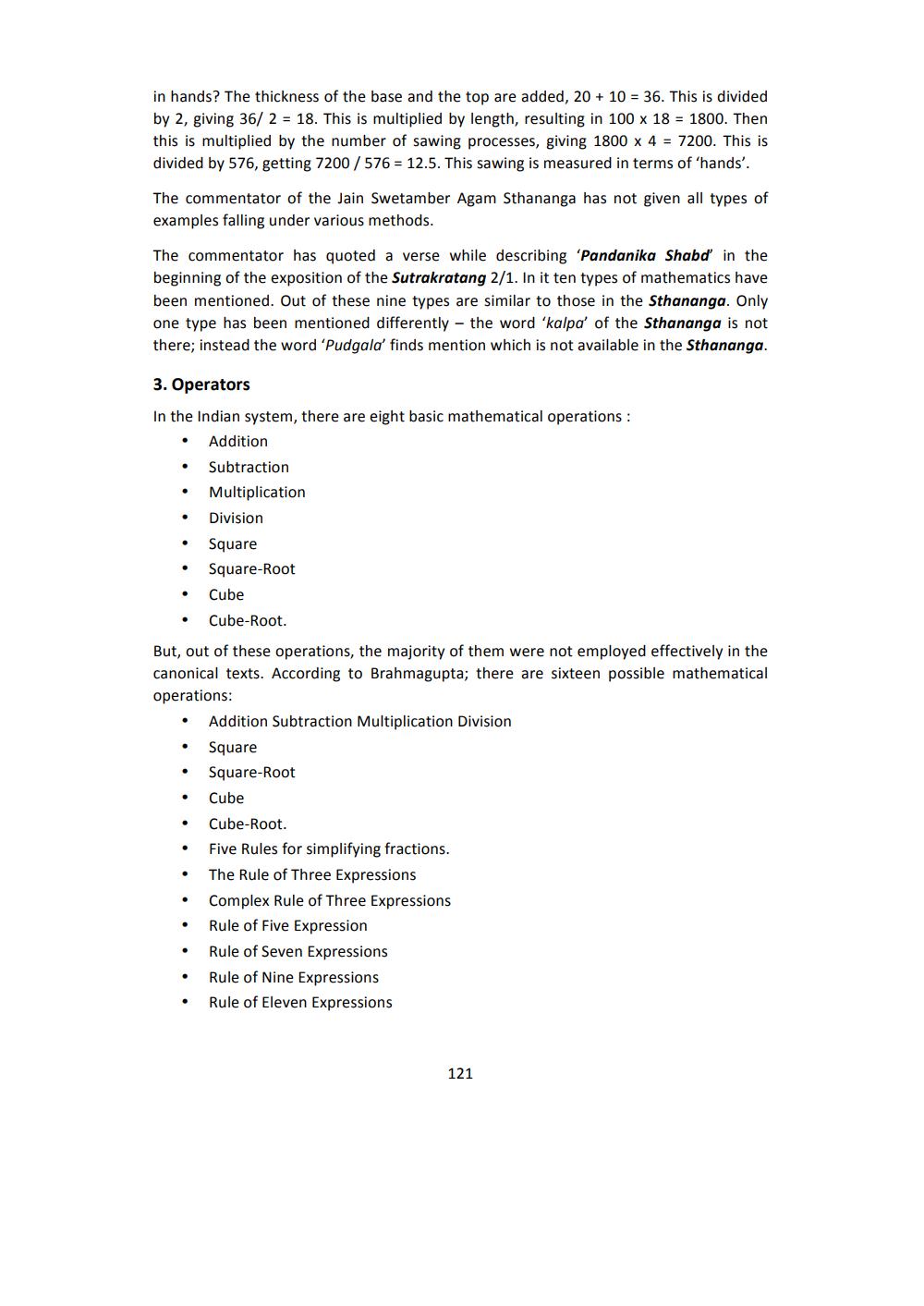________________
in hands? The thickness of the base and the top are added, 20 + 10 = 36. This is divided by 2, giving 36/ 2 = 18. This is multiplied by length, resulting in 100 x 18 = 1800. Then this is multiplied by the number of sawing processes, giving 1800 x 4 = 7200. This is divided by 576, getting 7200/576 = 12.5. This sawing is measured in terms of 'hands'.
The commentator of the Jain Swetamber Agam Sthananga has not given all types of examples falling under various methods.
The commentator has quoted a verse while describing 'Pandanika Shabd' in the beginning of the exposition of the Sutrakratang 2/1. In it ten types of mathematics have been mentioned. Out of these nine types are similar to those in the Sthananga. Only one type has been mentioned differently - the word 'kalpa' of the Sthananga is not there; instead the word 'Pudgala' finds mention which is not available in the Sthananga.
3. Operators
In the Indian system, there are eight basic mathematical operations :
Addition Subtraction Multiplication Division Square Square-Root
Cube • Cube-Root. But, out of these operations, the majority of them were not employed effectively in the canonical texts. According to Brahmagupta; there are sixteen possible mathematical operations: • Addition Subtraction Multiplication Division
Square Square-Root Cube Cube-Root. Five Rules for simplifying fractions.
The Rule of Three Expressions • Complex Rule of Three Expressions
Rule of Five Expression Rule of Seven Expressions Rule of Nine Expressions Rule of Eleven Expressions
121




